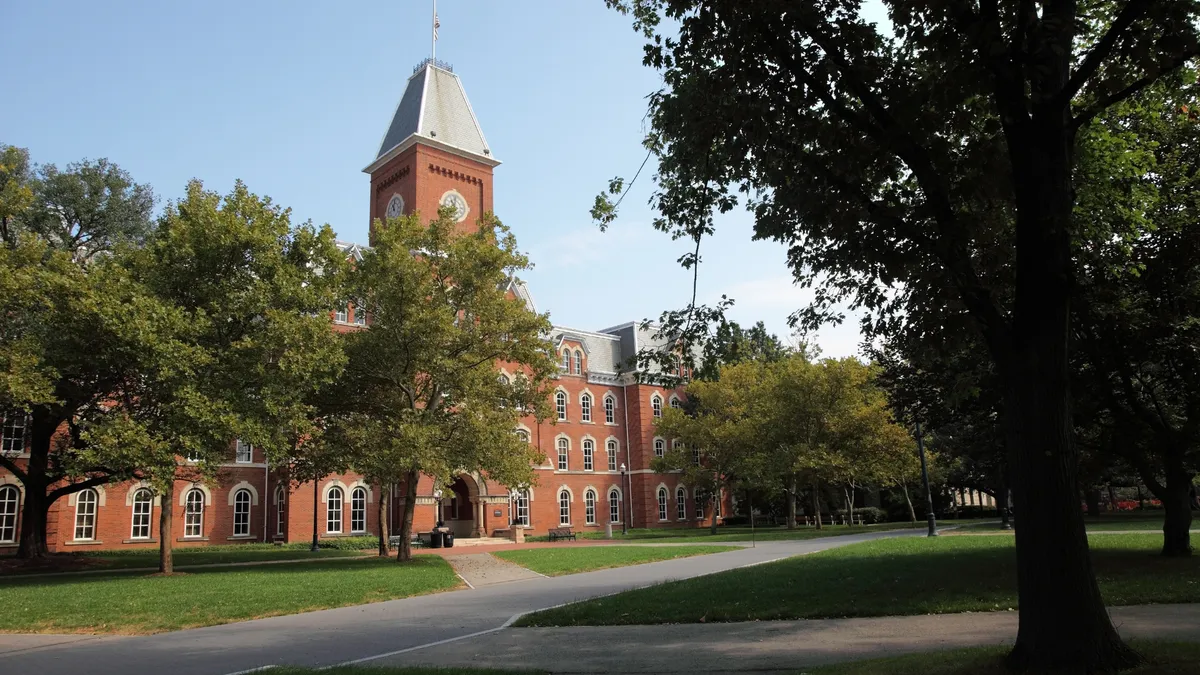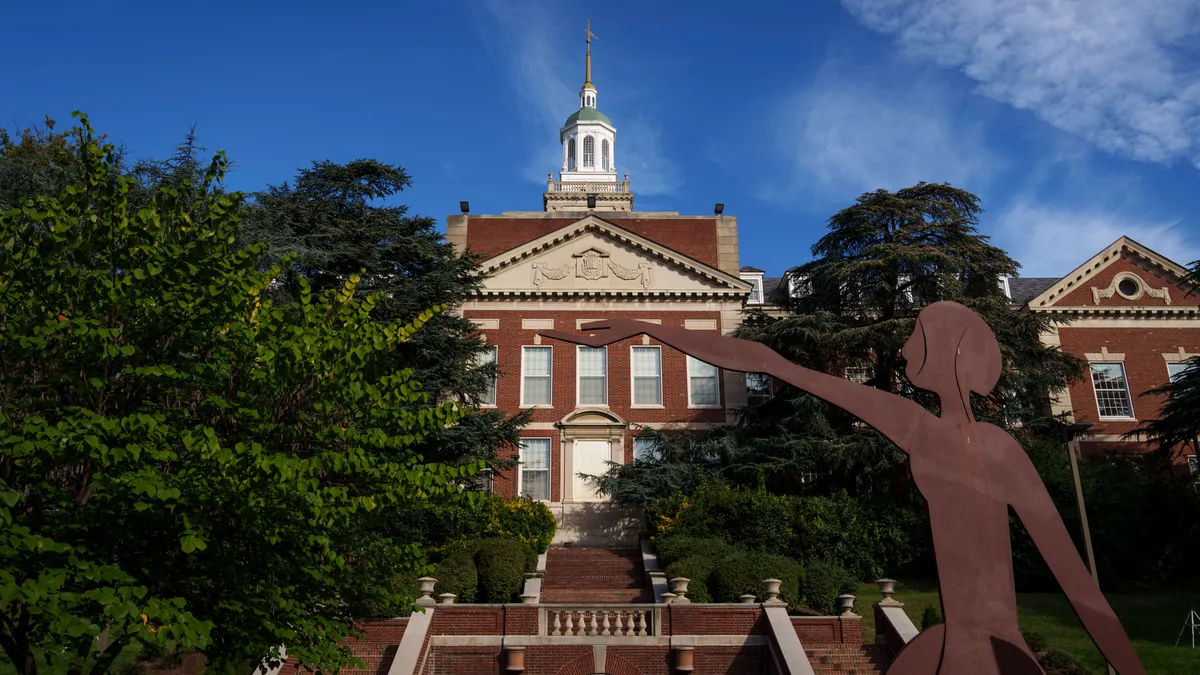Dive Brief:
- Almost 1 in 4 prospective students, 24%, began at least one college application but wound up not submitting any during the 2018-19 application cycle, according to an August working paper published by Brown University’s Annenberg Institute.
- Research indicates the essay portion of many applications is a sticking point. Students who completed a valid essay response were 51 percentage points more likely to hit submit than those who did not, at 94% versus 43%.
- "Our findings suggest that efforts to simply get students to the college application stage are insufficient," the paper said. "The form itself and the actions required to apply still represent a significant and unequal barrier."
Dive Insight:
College applications have long stood as the entry point to higher education. But that gateway can slam shut for students unfamiliar with the process and forced to navigate it without support.
This is especially true for selective colleges, whose applications contain "design elements that were originally intended to exclude, rather than include, many people, including non-white students," according to a 2022 report from the National Association for College Admission Counseling and the National Association of Student Financial Aid Administrators.
The new working paper from Annenberg aims to help colleges and policymakers develop strategies to engage and help those at risk of falling through the cracks.
"Not all students who could benefit from college apply," the paper said. "These 'non-submitters' represent a rich pool of college-interested students worthy of careful research and targeted support."
Researchers analyzed the behaviors of more than 1.2 million prospective college applicants, pulling data from the Common App, U.S. Department of Education, and U.S. Census. They focused on the 2018-19 application cycle, the last full one before the pandemic.
During that time, over 297,400 students began an application with the Common App but never submitted it.
The demographics of completers versus nonsubmitters largely fell along socioeconomic lines, the paper said.
On average, students who didn’t send in applications lived in areas with lower educational attainment, lower average income and higher rates of childhood poverty than their peers who did.
Actual applicants were also more likely than nonsubmitters to report having one or more parents with a college degree, the paper said.
Despite these factors, students who didn't complete their applications had similar GPAs, SAT scores, and educational goals to those who finished.
Tapping into this pool of applicants could help colleges as well as students. With the number of traditionally aged college students expected to drop off in 2025, many institutions are searching for new demographics to reach and novel ways of getting students in the door.













